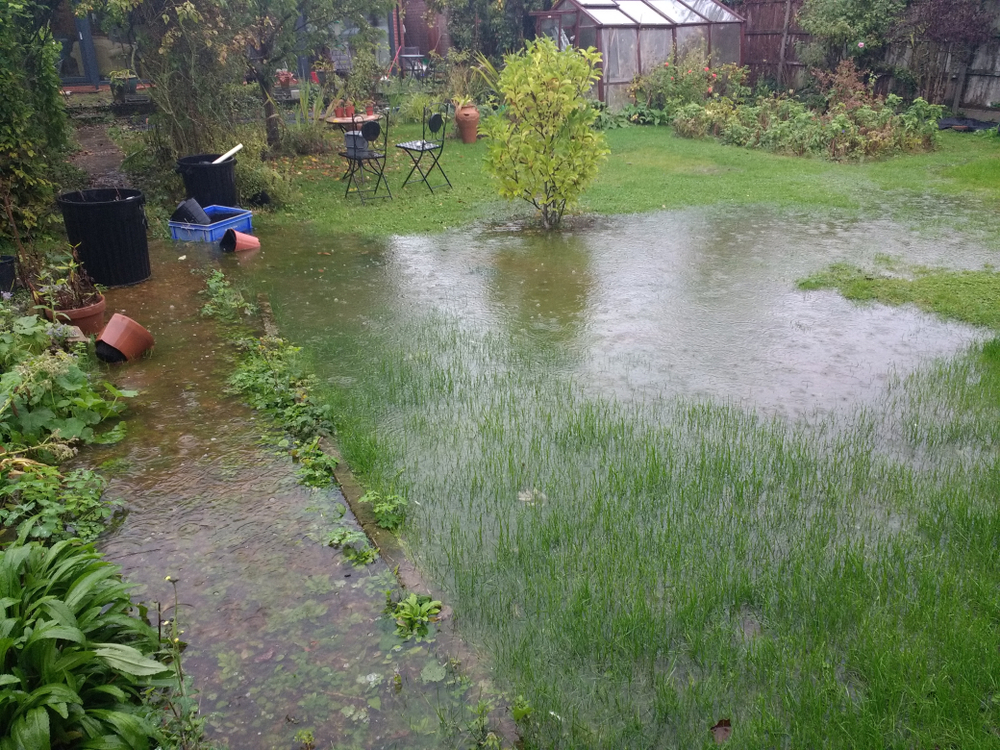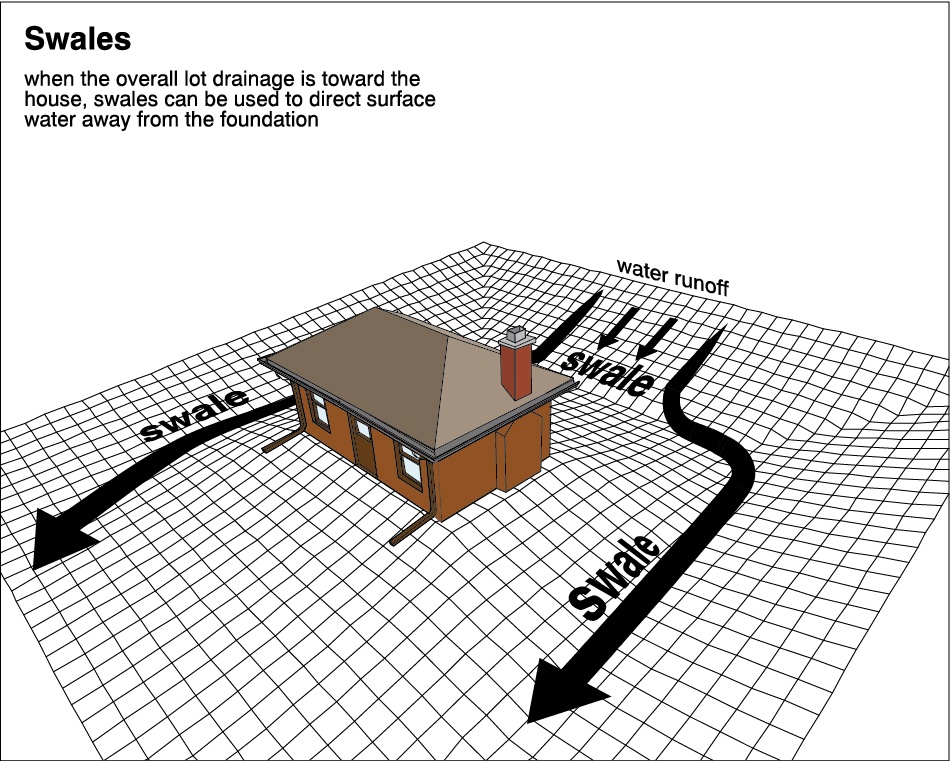
one
two
three



With spring rains falling, you may be experiencing some problems with stormwater management. Are there places where the soil is eroding? Does stormwater get into your home or pool in your yard after a heavy rain? If so, here are some things that can help manage that water, so it doesn’t cause problems for you or your neighbors.

Swales and berms work to slow stormwater down and direct it to give it a chance to absorb into the ground instead of running onto the hardscape. The swales are the valleys, and the berms are the ridges or high points. Swales and berms direct rainwater so that it does not cause a problem. In some cases when water passes along the back of several homes, you may have to work together with your neighbors to come up with the best solution that benefits everyone.
In heavy rain, all the water that goes down the downspouts from your roof can dig a hole around your foundation, causing problems. One way to deal with that is to bury the downspout and get out from the foundation to where it can drain away from the house. You can also establish a rain garden where the downspout outlets the water. A rain garden lets the water soak in instead of running off and doing damage. The end of the downspout should be at least ten feet from the house to keep moisture from accumulating inside. Choose plants that can withstand being submerged up to six inches deep for twelve to twenty-four hours but can also do well when conditions are dry. Native ornamental tall grasses work really well for this.

A French drain is a solution to help soak up groundwater in saturated lawn areas and is typically found in the low areas of the yard along swales & valleys. A French drain installation consists of a trench below a drainage problem with a perforated pipe and clean gravel. The first step is to dig a ditch that is 12” – 24” deep for the gravel and pipe to fit in. This ditch needs to slope down with the natural grade. After you dig the trench, place the perforated pipe with the drainage holes down in the ditch. Cover the pipe with gravel until the trench is filled in. Some people put a layer of soil and sod over the gravel, so it blends in with the lawn. Other times the decorative rock can be used to cover with allows more surface water to enter directly into the pipe and move the water faster.
Before you start making changes to the drainage of your property it is best to come up with a comprehensive drainage plan. In fact, in some jurisdictions, you are required to come up with a drainage plan if you add more than 400 square feet of impervious surface. This drainage plan will include changes you need to make to your landscape and the effects on neighboring properties. You don’t want change the drainage to direct your stormwater straight into your neighbor's house, so make sure to think things through.
Royal Creations Architectural Landscaping has trained professionals that can develop a drainage plan for your property and install the needed structures. Schedule a consultation now so we can take care of your stormwater problems.